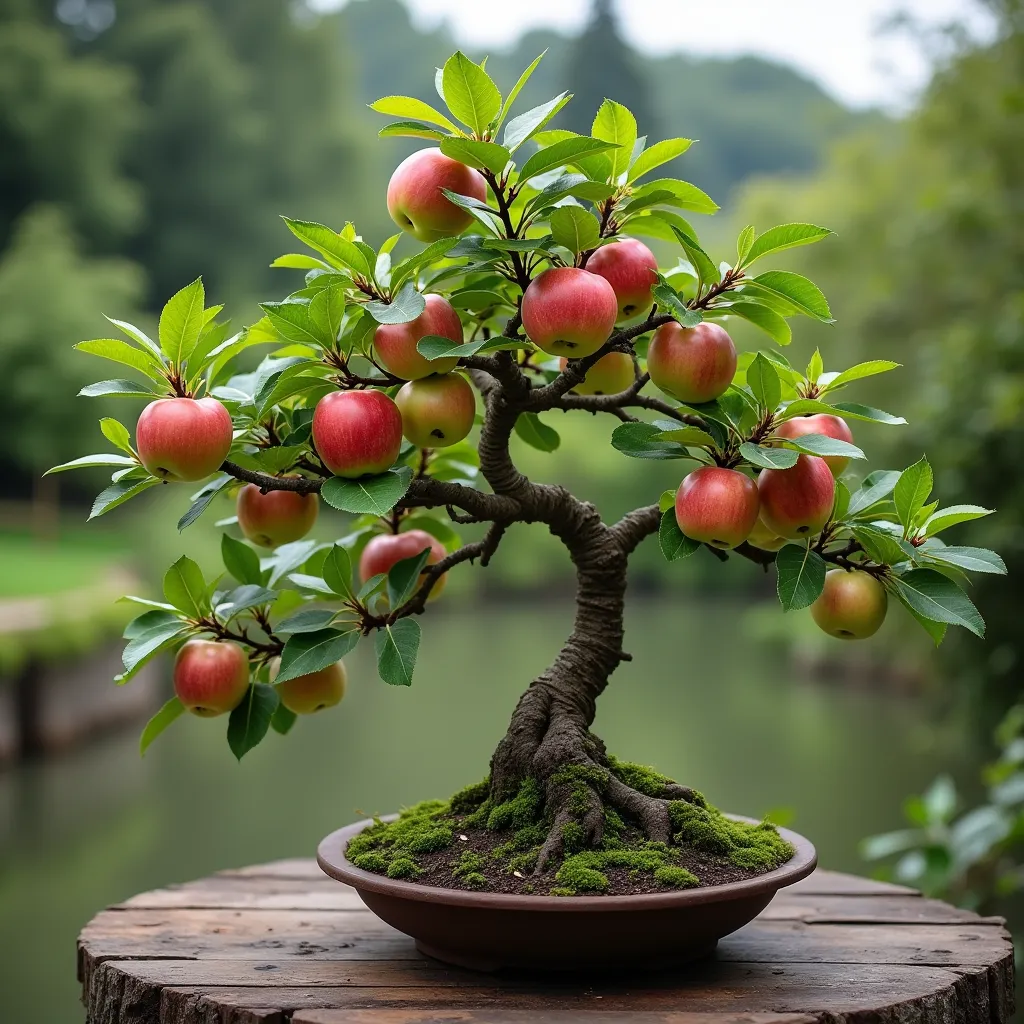How to Create a Stunning Apple Bonsai Tree: A Step-by-Step Guide
Creating a stunning Apple Bonsai tree is a rewarding and artistic endeavor that combines horticulture with the ancient art of bonsai. In this guide, we will walk you through the process of transforming a regular apple tree into a beautiful bonsai. The video we are summarizing provides a detailed step-by-step approach to pruning, wiring, and maintaining your apple bonsai tree to ensure it thrives and looks its best.
TOC
- Introduction to Apple Bonsai Trees
- Tools Needed for Styling
- Pruning Techniques
- Wiring for Shape and Movement
- Seasonal Care and Maintenance
- FAQ
- Conclusion
Introduction to Apple Bonsai Trees
Apple bonsai trees are unique and captivating due to their miniature size and the presence of tiny apples. These trees can be a beautiful addition to any bonsai collection, offering both visual appeal and the charm of fruit-bearing branches. The video begins by showcasing an apple tree in the fall, laden with small apples, and sets the stage for the pruning and wiring process.
The presenter explains that the tree is about 10 to 15 years old and highlights the importance of seasonal care. Fall is an ideal time for pruning as the tree is full of fruits, and the structure is more visible. This initial overview helps viewers understand the context and the specific needs of an apple bonsai tree.
Tools Needed for Styling
To style an apple bonsai tree, you will need a few essential tools. The video emphasizes the importance of having the right equipment to achieve precise cuts and effective wiring. The tools mentioned include:
- Twig shear
- Concave cutter
- Wire cutter
These tools are crucial for pruning branches, refining the tree's silhouette, and adding movement to specific branches. The presenter demonstrates how to use each tool effectively, ensuring that viewers can replicate the process with confidence.
Pruning Techniques
Pruning is a critical step in shaping an apple bonsai tree. The video focuses on pruning the apex and other thick branches to refine the tree's silhouette. The presenter starts by identifying two thick branches at the apex and decides to prune the one on the left. This decision is based on the overall balance and aesthetics of the tree.
Another thick branch is removed to further enhance the tree's shape. The presenter advises rotating the tree while pruning to get a 360-degree view, ensuring that the tree looks good from all angles. This comprehensive approach to pruning helps in achieving a well-balanced and visually appealing bonsai tree.
Wiring for Shape and Movement
Wiring is used to guide the growth and shape of the branches. In the video, the presenter wires a specific branch to bend it downwards and add movement, reducing its visual length. This technique is essential for creating a dynamic and natural-looking bonsai tree.
The wiring process is limited to only a few branches, as the tree already has a clear shape. The presenter demonstrates how to apply the wire and bend the branch carefully, ensuring that it does not break. This section of the video provides valuable insights into the delicate art of wiring bonsai trees.
Seasonal Care and Maintenance
After the fall pruning, the apple bonsai tree will react by growing new shoots in the spring. The presenter emphasizes the importance of continued pruning two to three times a year to improve the tree's ramification. Regular maintenance is key to keeping the bonsai tree healthy and aesthetically pleasing.
The video also highlights the benefits of enrolling in online bonsai courses to learn more about techniques like pruning, wiring, and repotting. These courses offer detailed curriculums and the opportunity to ask questions to experienced teachers, making them a valuable resource for bonsai enthusiasts.
FAQ
Q1: What tools are essential for styling an apple bonsai tree? A1: The essential tools for styling an apple bonsai tree include a twig shear, concave cutter, and wire cutter.
Q2: When is the best time to prune an apple bonsai tree? A2: Fall is an ideal time to prune an apple bonsai tree as the structure is more visible, and the tree is full of fruits.
Q3: How often should I prune my apple bonsai tree? A3: It is recommended to prune your apple bonsai tree two to three times a year to improve ramification and maintain its shape.
Q4: Can I learn bonsai techniques online? A4: Yes, you can enroll in online bonsai courses that offer detailed curriculums and the opportunity to ask questions to experienced teachers.
Q5: Why is wiring important in bonsai styling? A5: Wiring is important in bonsai styling as it helps guide the growth and shape of the branches, creating a dynamic and natural-looking tree.
Conclusion
Creating a stunning apple bonsai tree involves careful pruning, precise wiring, and regular maintenance. By following the steps outlined in the video, you can transform a regular apple tree into a beautiful bonsai with a refined silhouette and improved ramification. Investing in the right tools and learning from online courses can further enhance your skills and ensure the health and beauty of your bonsai tree. Happy bonsai gardening!

